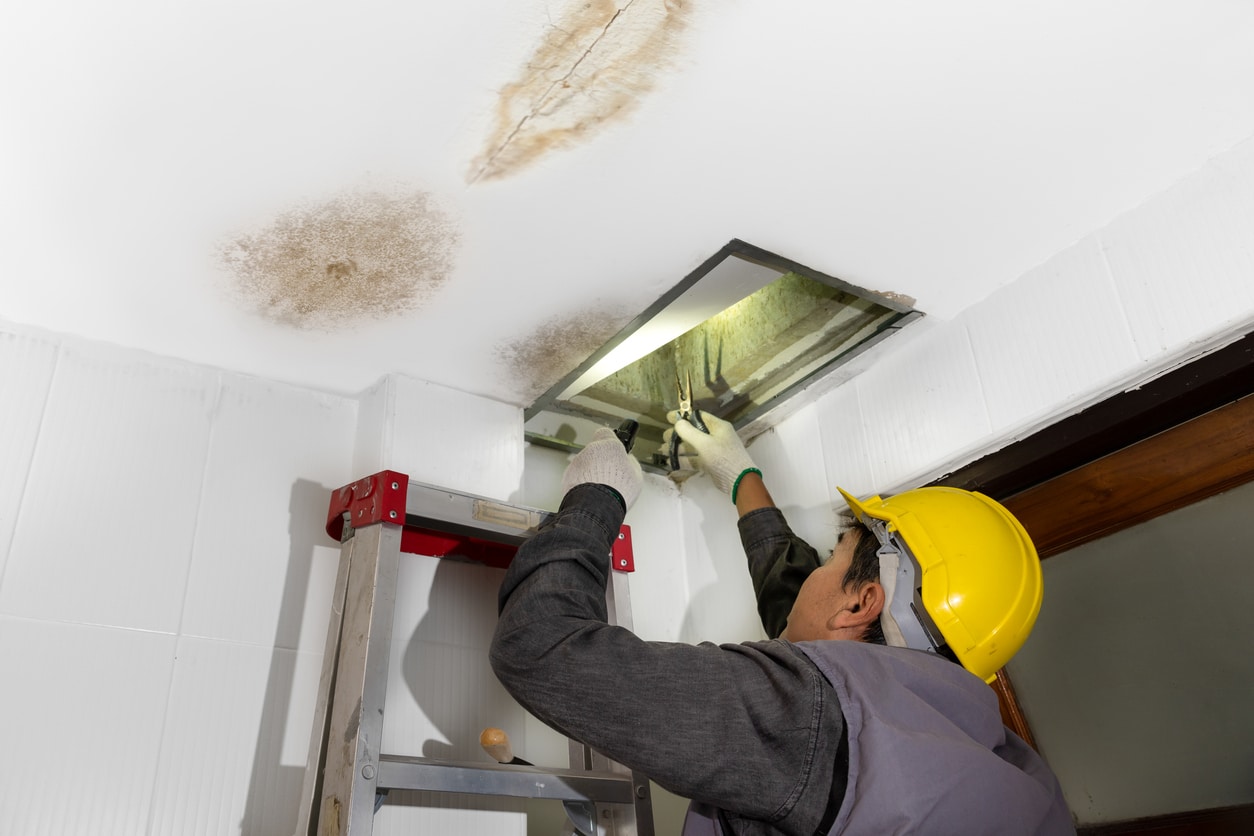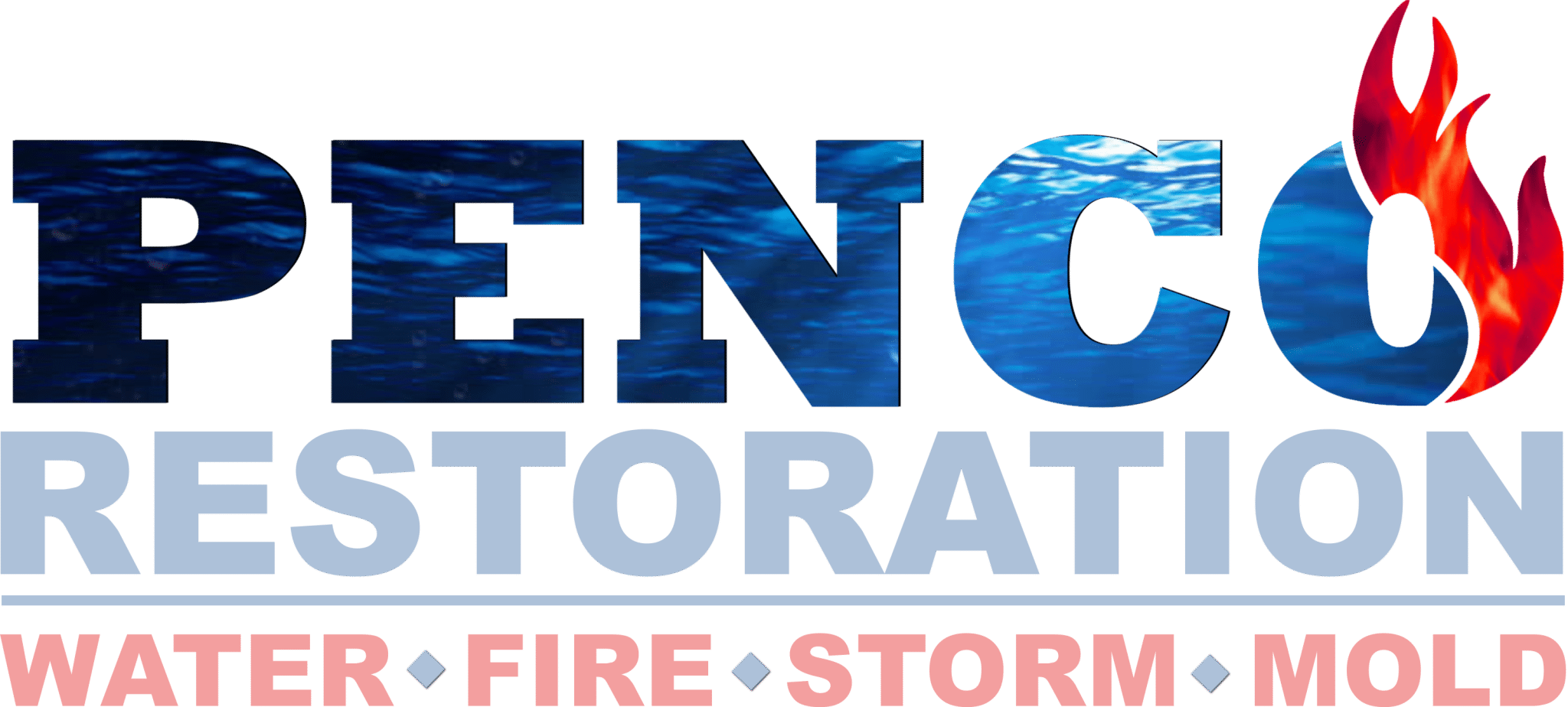
Blog
Are You at Risk of Mold Damage After a Hurricane?

Are You at Risk of Mold Damage After a Hurricane?
When a hurricane strikes, property owners’ first concern is often restoring physical damage caused by the storm, such as broken windows, roof leaks, and flooding. However, an often overlooked issue that frequently accompanies hurricane damage is the potential for mold growth. When water intrusion from a storm leads to damp, humid conditions, your property quickly becomes the ideal environment for mold development.
Despite its often hidden nature, mold can pose serious health risks and cause significant damage to your home or business. Mold can grow rapidly and often goes unnoticed until it becomes a major problem, leading to costly repairs and potential health hazards such as respiratory issues and allergic reactions. Understanding the risk factors, when to test for mold growth, and how to respond swiftly to prevent mold from developing after a hurricane will protect both your property and your health.
Everything to Know About Post-Hurricane Mold Growth
How Quickly Can Mold Grow After Hurricane Damage?
When your home or business suffers from water damage after a storm, mold can grow very quickly, generally within 24-48 hours. It’s important to note that visible signs of mold growth often won’t appear until about three weeks after the initial water damage. This means the two-day window after a hurricane is a critical time to prevent mold from developing, even if you don’t see signs right away. In fact, the EPA recommends assuming mold growth has occurred if wet or damp areas are not dried within this timeframe.
The Most Common Culprits
Storm damage to your property invites mold growth. Even if the damage doesn’t seem severe, don’t overlook these common culprits.
Flooding
Flooding is often one of the most immediate and severe consequences of a hurricane. Infiltrating homes and businesses, soaking into walls, floors, and furnishings, this saturation provides an ideal environment for mold to thrive. Once the water recedes, damp materials can remain moist for extended periods, giving mold spores the perfect conditions to germinate and multiply. Even if the visible water is removed, the underlying structures and materials can retain enough moisture to support mold growth.
Roof Damage
Strong winds and flying debris during a hurricane can cause broken shingles, cracked tiles, and even holes in the roof that allow rainwater to seep into your attic and upper floors. This water intrusion can lead to wet insulation, wood beams, and ceilings. If not addressed promptly, the moisture can penetrate deeper into the structure, creating a breeding ground for mold. Leaks that go unnoticed or are inadequately repaired can result in persistent moisture problems that support ongoing mold growth.
High Humidity Levels & Poor Ventilation
High humidity levels are common after a hurricane due to the large amounts of standing water and saturated ground. Mold thrives in environments with high humidity, typically above 60%. Homes and buildings can also suffer from inadequate ventilation post-storm due to power outages, closed windows and doors, or blocked airways. The combination of high humidity and poor ventilation prevents indoor moisture from evaporating. With nowhere to go, moisture can seep into walls, floors, and other structures, providing mold the perfect conditions to grow.
Damaged Building Materials
When the drywall, insulation, carpeting, or wood of your property is damaged, these highly porous materials can easily absorb water. Once wet, they can retain moisture for a long time, even after removing the visible water. Mold spores naturally present in the air can settle on these damp materials and begin to grow. The cellulose content in wood and drywall also serves as a food source for mold, further promoting its growth.
By understanding these common causes of mold growth after a hurricane, you can take proactive steps to mitigate the risk. Addressing water damage promptly, improving ventilation, and monitoring indoor humidity levels are crucial steps in preventing mold from taking hold in your property.
Signs of Mold Growth to Look Out For
Even if you’ve done everything you could to get rid of water damage and humidity after a storm, moisture can infiltrate hidden areas, for example, within walls or under flooring. It’s important to be able to recognize the early signs of mold growth so you can take action before it becomes a major problem:
- Musty, earthy, or mildew odors
- Visible mold growth on walls, ceilings, floors, or other surfaces (may appear black, green, white, orange, or purple)
- Water stains or peeling, bubbling, or cracking wallpaper
- Black spots on air conditioning vents, indicating mold growth within the HVAC system
The Risks of Mold Growth
Mold contamination at your home or business isn’t something to be taken lightly. It can cause significant health risks, especially with prolonged exposure.
Who is Most at Risk?
Mold exposure can harm anyone but is particularly dangerous for individuals with respiratory conditions or weakened immune systems. When inhaled, mold spores and their byproducts can exacerbate symptoms of asthma, bronchitis, or COPD.
Individuals with weaker immune systems don’t have the ability to effectively fight the harmful effects of mold, often resulting in more severe infections and illnesses. In these cases, even a small amount of mold can cause significant health issues. If you have any of the following people visiting your home or business, it’s even more crucial to maintain a mold-free environment:
- People with respiratory conditions
- Pregnant women
- Children
- Older adults
- Individuals with weakened immune systems due to:
- Chemotherapy
- HIV/AIDS
- Autoimmune disorders
- Any other reason
Health Problems From Mold Contamination
Short-term exposure can cause allergy-like symptoms, including:
- Nasal congestion and runny nose
- Watery, irritated eyes
- Sneezing
- Coughing or wheezing
- Sore throat
- Skin irritation or rash
- Headaches
Long-term exposure can lead to more severe health problems:
- Chronic sinusitis
- Fatigue
- Organ damage
- Increased upper and lower respiratory symptoms
- Increased sensitivity to mold, resulting in more severe allergic reactions
- Fungal infections in people with weakened immune systems
If you have any of these symptoms of mold exposure, it’s time to call a company that offers professional mold decontamination, like PENCO Restoration. Their IICRC-certified mold removal specialists can effectively return your indoor air quality to safe levels and restore your health.
Preventing & Addressing Mold Growth After Hurricane Damage
Acting quickly is the key to preventing mold growth in your home or business after a hurricane. Taking these steps as soon as possible will help reduce your chances of mold developing:
- Remove standing water using pumps, wet vacuums, or buckets.
- Start dehumidifying immediately by running air conditioners, fans, and dehumidifiers or opening windows when it’s less humid outside.
- Remove water-damaged items if they can’t be thoroughly dried within 1-2 days.
- Protect against further water intrusion by using waterproof tarps to cover damaged roofs, windows, or doors.
- Clean and disinfect non-porous surfaces.
- Keep an eye out for signs of mold growth and water damage in hidden places.
If you suspect mold growth or have experienced water damage, don’t wait to address the problem. PENCO Restoration offers expert water damage restoration and mold remediation services to keep your property safe and mold-free. Our experienced team can swiftly assess the situation, effectively remove water damage and mold, and take steps to prevent future growth. Contact us today to restore your property and peace of mind after a hurricane.
Call PENCO to Restore Your Georgia Property Now
Facing damage from storms, mold, or water on your property? Trust PENCO Restoration in Sharpsburg, GA, to handle all your restoration needs. We are committed to returning our clients’ homes or businesses to their pre-loss condition and making sure they are completely satisfied with our work. Experience the PENCO promise! Call us at 770-683-7362 to schedule your assessment now.
